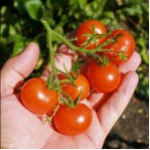 Before getting started, you have to consider the area for your garden. The typical garden is a row garden versus a raised bed or a greenhouse garden, and you can incorporate all three to help raise enough crops. On average, you should be able to raise about one half pound of produce per square foot of garden. This average assumes you have at least a 100 to 110 square foot (1/4 acre) area dedicated to raising crops. To sustain yourself throughout the year you will have to preserve the produce for consumption during off seasons and the winter months unless you incorporate a greenhouse. Once your garden is producing at peak you will probably not be able to consume all that you harvest daily, so canning is essential.
Before getting started, you have to consider the area for your garden. The typical garden is a row garden versus a raised bed or a greenhouse garden, and you can incorporate all three to help raise enough crops. On average, you should be able to raise about one half pound of produce per square foot of garden. This average assumes you have at least a 100 to 110 square foot (1/4 acre) area dedicated to raising crops. To sustain yourself throughout the year you will have to preserve the produce for consumption during off seasons and the winter months unless you incorporate a greenhouse. Once your garden is producing at peak you will probably not be able to consume all that you harvest daily, so canning is essential.
Raised beds and greenhouses will, of course, require materials and tools on the front end to construct. Raised beds are ideal if your soil is not suited for crops or if ground space is limited. When constructing a raised bed over poor soil ensure the topsoil is deep enough to sustain the particular plant(s) you are raising. After you build the beds, fill them with quality topsoil.
Things to consider include your temperate zone, which dictates your growing season. You will have to study the plants you want to raise to ensure they are suitable for your zone. Additionally, you do not want all of your vegetables (like tomatoes and cucumbers) to harvest at the same time unless you can preserve them by canning or pickling before they get too mature and begin to rot. Stagger harvest times by knowing the growing times to maturity of your vegetables. For example, tomatoes may mature from seed in 90 to 120 days, so plant your first crop and then wait a week (or even two weeks) to plant the next crop if you have a long enough growing season. This method ensures you have a constant yield and that you do not have to try to preserve your harvest all at once.
Use a greenhouse to grow produce not native to your area. You can raise virtually any plant inside a greenhouse and you can even pollinate plants such as squash or cucumbers without bees. However, in the spring and summer months allowing bees to pollinate your crops is the preferred method.
The female blossom must receive pollen from the male flower. Using a cucumber as an example, you will see a tiny fruit behind the female blossom. To pollinate the female plant you can remove the male blossom and bend the petals back so the two antler looking stems can be brushed against the female flower (the stems have the pollen). Some have had luck using a small camel hair paintbrush, or even a cotton swab, to transfer the pollen. Use this method on other plants where bees may not be able to pollinate the blossoms.
Tomatoes need at least six hours of direct sun daily and roughly two inches of water weekly. Tomatoes are self-pollinating so they are ideal for greenhouse or patios where bees would not be prevalent.
To determine your hardiness zone visit http://www.usna.usda.gov/Hardzone/ushzmap.html
Windmill Power to Sustain Crops
Practically anyone can install a wind-powered windmill to pump water from virtually any depth. The mechanics of a windmill are straightforward. The blades spin at low speeds, which provide a very high torque. As the wheel spins, gears attached to what are called Pittman Arms cause a piston to move up and down in the well casing. This movement operates a pump that has been lowered down the well casing.
There is no electricity needed and there is constant water movement when the wind is blowing. Typically, the water is pumped to a holding tanking or into a stock tank for farm animals or use for crop irrigation. Typical maintenance is ensuring the moving parts above ground receive adequate lubrication.
The design itself helps the windmill to maintain stability during high winds. The structure/tower must be anchored properly over the well cap because once the pump rod is inserted in the well(,) any shifting of the tower can interrupt the water flow.


